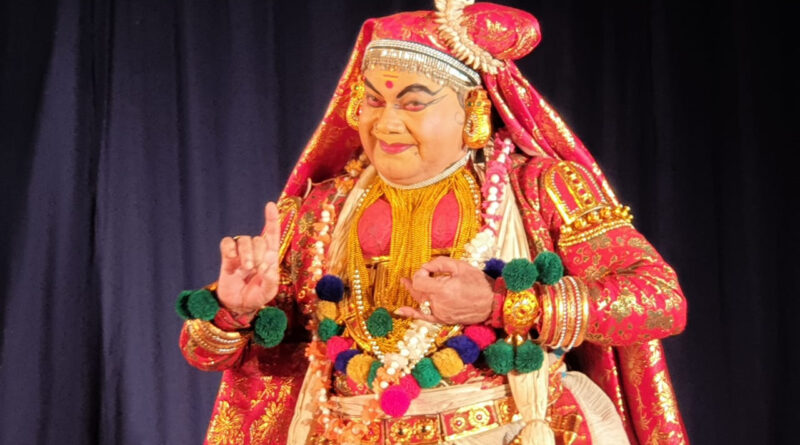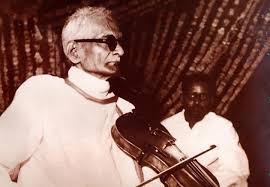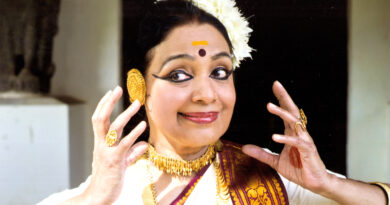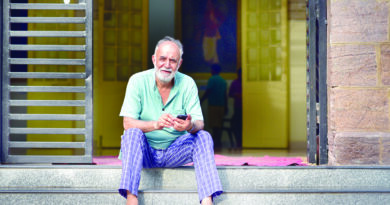Prof. T Sankaranarayanan: A Doyen of Kathakali
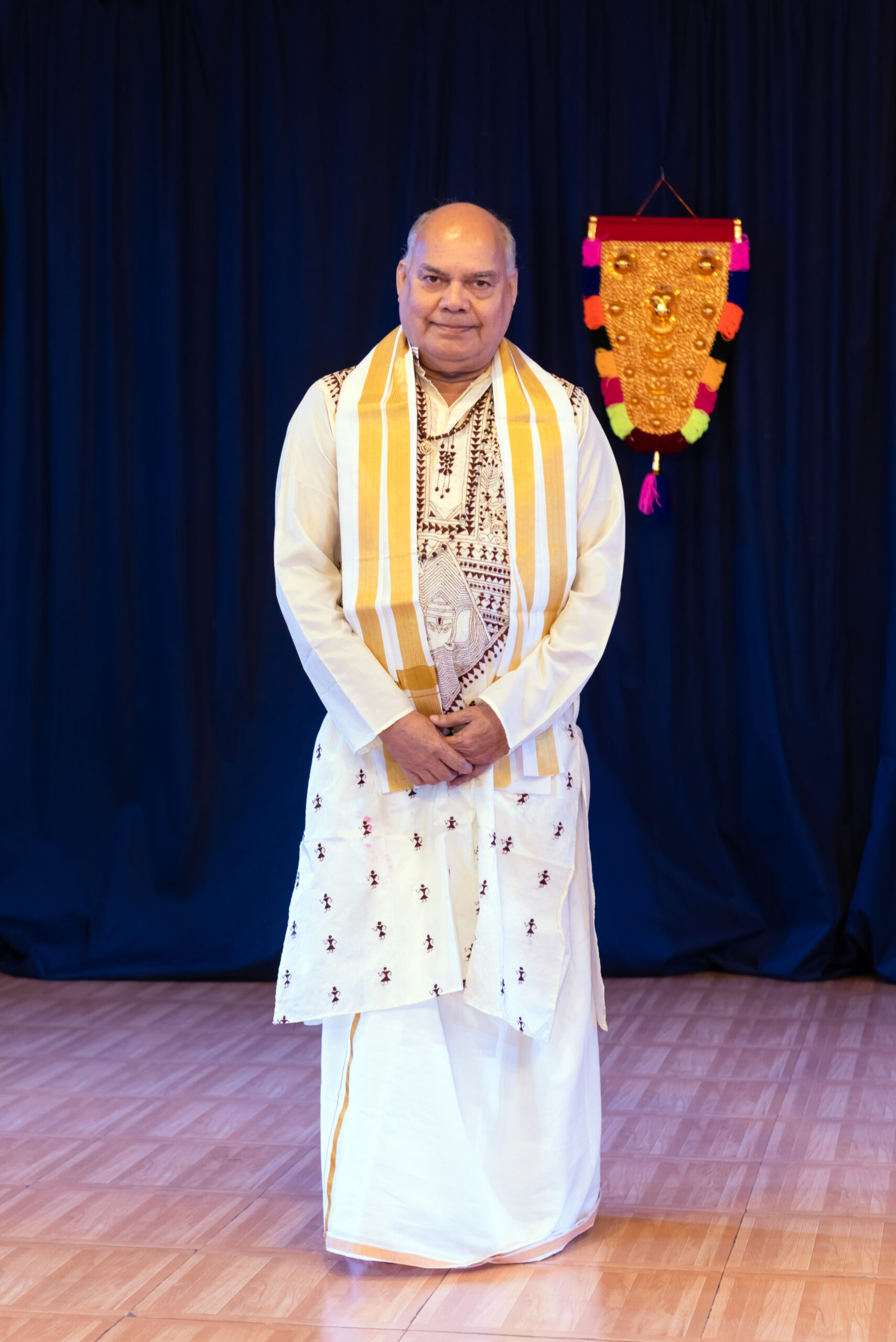
Text:Paul Nicodemus
A true artist does not retire. Octogenarian Professor T Sanakaranarayan, despite his advancing years, delighted the audience as Poothana in traditional Kathakali streevesham during the 92nd birth anniversary celebrations of Guru Govindan Kutty in Kolkata. His passion was once again evident during the recently concluded Jathis Kolkata Indian Dance Festival wherein he took part in the two-day festival as a guest and witnessed every performance. He gave an inspiring message for the artistes.Prof. Sankaranarayanan is a popular Kathakali exponent who taught many students both the practical and theory of Kathakali. His association with Visva-Bharati, Shantiniketan, in Kolkata dates back to the ’70s and he still continues to spread wisdom in the campus.T Sankaranarayanan was born in a village, Manjeri, now in Malappuram district of Kerala. His father, late C Krishnan Nair, served in the Royal Army during the British period and later on, became a freedom fighter in the Indian freedom struggle. In the events that followed, the British imprisoned his father. Throughout his life, his father remained a social worker and worked for the upliftment of the poor and downtrodden. He also fought against cast discrimination. His mother, Kalyani Amma, was a homemaker who followed her husband’s philosophy.
Sankaranarayanan attended a village school, and on completion of class VIII exams, he studied for one more year till 1954. At fifteen, he joined Kerala Kalamandalam, the pioneering institute of South Indian Classical Theatrics and Music functioning under the Government of Kerala in 1955. The institution was founded by late national poet Vallathol Narayana Menon for specialised training in Kathakali.
“My high school teachers, on noting my theatrical and comic talents, had suggested to me to learn Kathakali,” says Sankaranarayanan
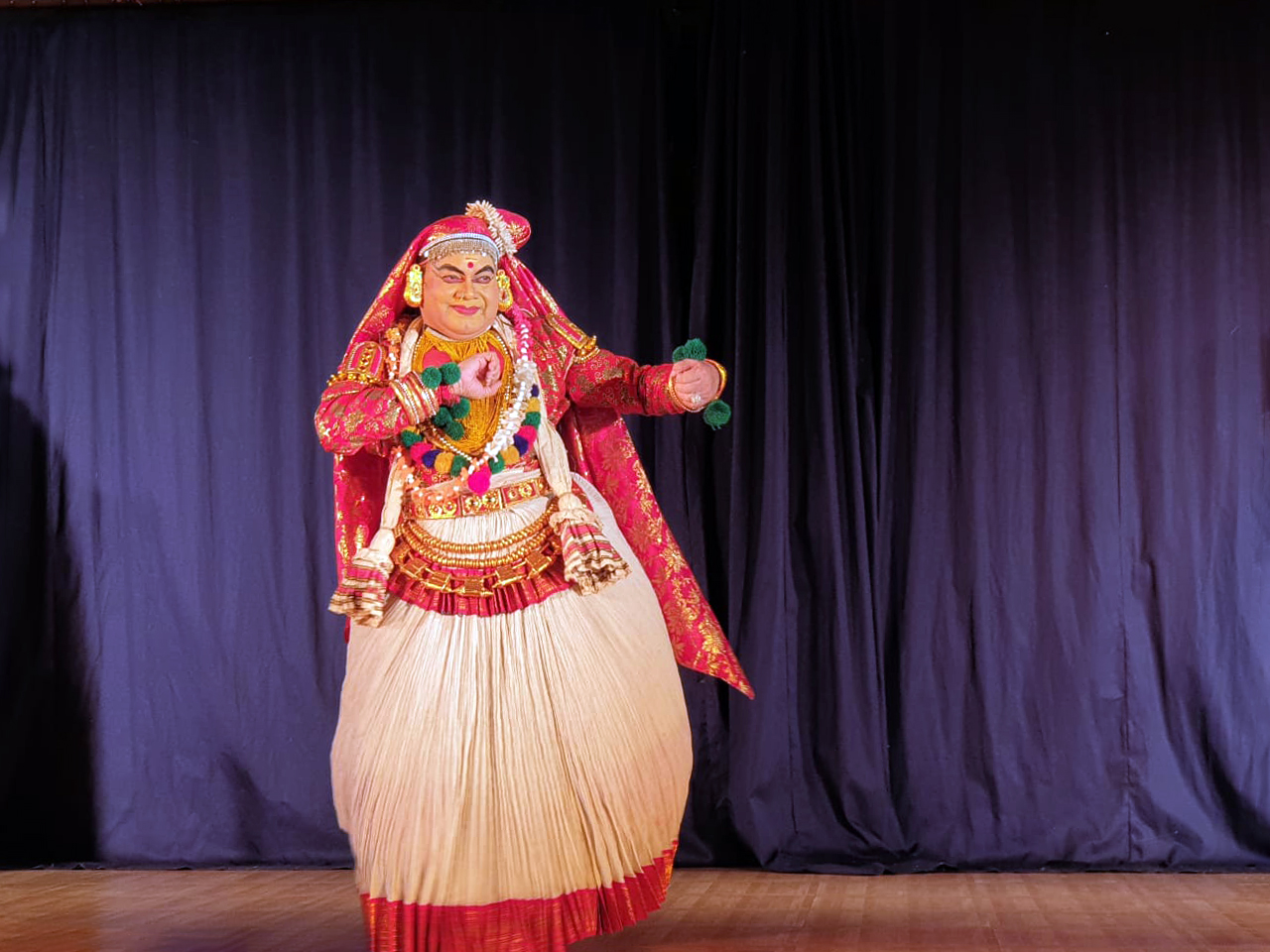
The people who played a major role in driving him to learn the art form were his father, and the Great Poet Vallathol himself. “I am interested in various art forms and their correlations,” he adds. The performances and skills of various artistes inspired him, especially their creative extempore abilities and performances.
Sankaranarayanan had various teachers including Kalamandalam Padmanabhan Nair, Padma Vibhushan recipient Kalamandalam Raman Kutty Nair, Vazhenkada Kunchan Nair, Kottakkal Krishnan Kutty Nair and Padma Shri recipient KR Kumaran Nair, one of the leading disciples of the legendary exponent and guru late Ramunni Aasan.
KR Kumaran Nair Aasan has been his role model. His varied interests and versatile talents found him in innumerous Tamil films as a dance director along with his career as a Kathakali performer and teacher. Kumaran’s creativity made him uniquely unpredictable on the performing stage.
On completion of the six-year course in Kathakali at Kerala Kalamandalam in 1961, he joined the popular PSV Natyasangham of Kottakkal Ayurveda Sala as a performer. Later, he developed into an independent performing artiste in different dance forms and toured various states in India giving performances at the national level. Specialising in both male and female roles in Kathakali has been his distinct feature. Sankaranarayanan began teaching students from the age of 22 years. As a performing member of the Kerala Government Cultural Troupe, doing interstate programmes gave him enough exposure to varied performances. He received wide acceptance as a freelance artiste and a teacher in Kerala.
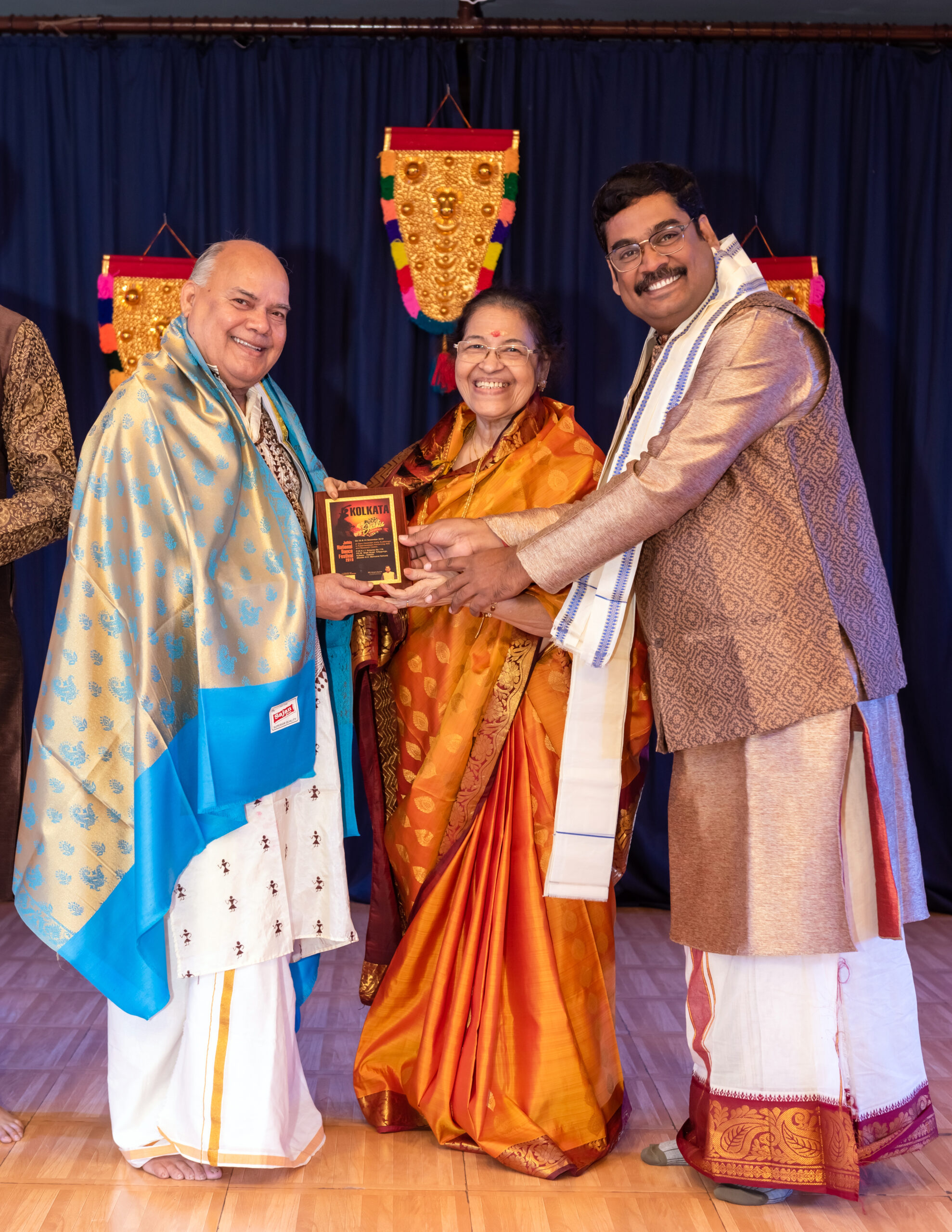
In 1970, Sankaranarayanan joined Kalamandalam Kolkata as a teacher and moved to the City of Joy. In the next eight years, he was associated with various organisations of Kolkata like Surangama, founded by Rabindranath Tagore’s favourite Sailaja Ranjan Majumdar, Children’s Little Theatre and Kerala Samajam Kolkata. He trained students for various performances. In 1975, Biswanath Ghosh invited him to train artistes for their performing tour of Japan in which Sankaranarayanan was also a performing member.
In 1978, the legendary Rabindra Sangeet artiste and principal of Sangeet Bhavana, Visva Bharati University, Santiniketan, Kanika Banerjee invited Sankaranarayanan to join them as a lecturer to train students in Kathakali. “I was chosen because of my successful experience in the preceding years of applying classical techniques of dance into choreographies with Tagore’s dance-dramas,” he says. For the next twenty-six years, he diligently went on grooming students, inspiring, encouraging and leading them successfully in all their presentations representing Sangeet Bhavana.
He retired as professor in Kathakali and principal of Sangeet Bhavana, Visva-Bharati, Santiniketan in 2001. His varied interests in various dance forms made him contribute immensely towards their application in Rabindrik dance and dance dramas. “I can proudly say that with all the love and respect they have shown to me because of my uncompromising hard work, involvement in their activities and appreciating them, I still remain, after retirement, a significant part of their artistic lives and performances even today,” says Sankaranarayanan.
Sankaranarayanan is passionate about gardening and loves reading books and watching theatre.
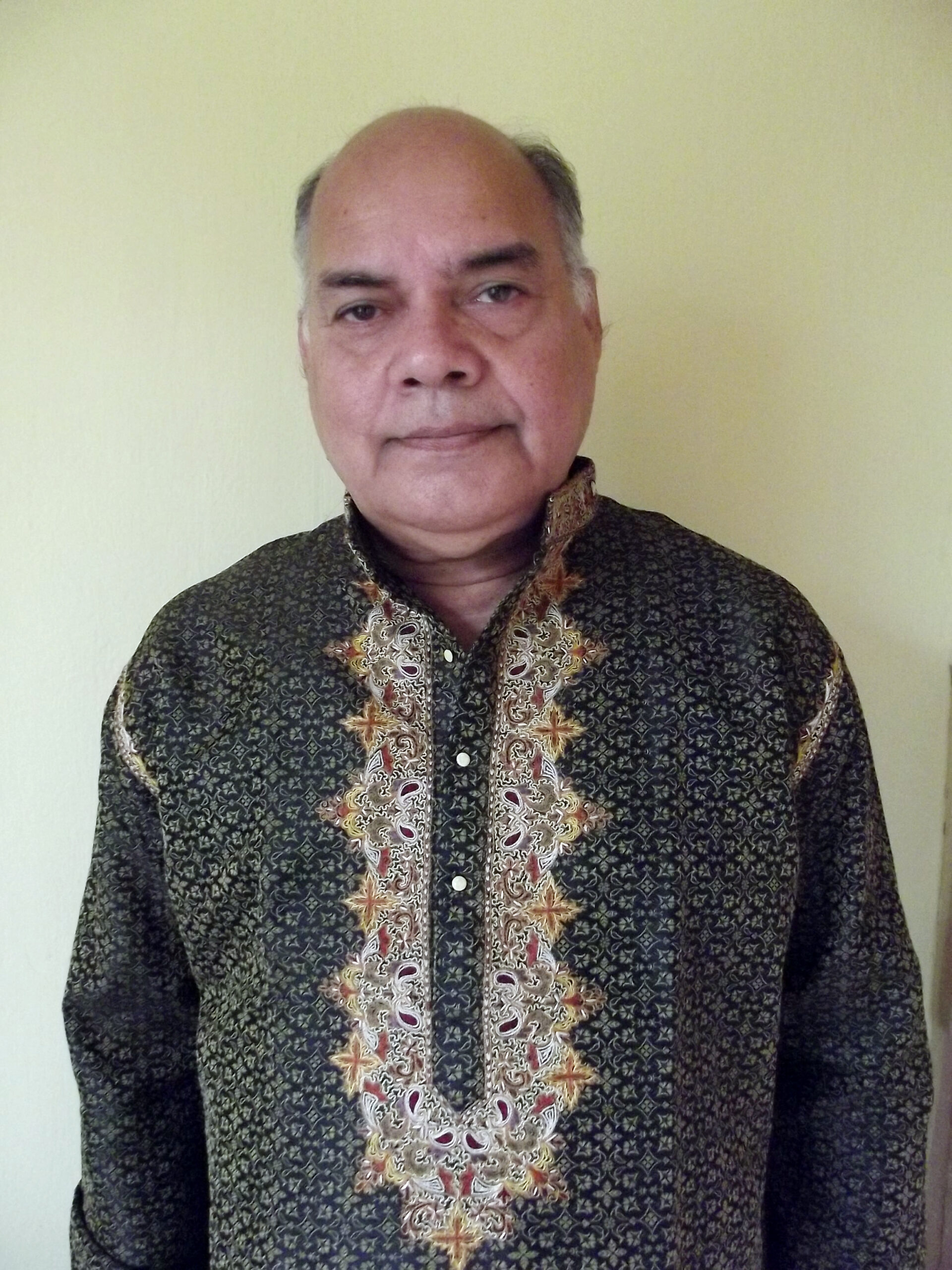
Sankaranarayanan’s daily morning routine includes waking up early, listening to music, going for a walk, doing some physical exercise, taking a bath, offering prayer and having breakfast. Afterwards, he reads the newspaper until his students arrive. He conducts classes till 12 noon. After having lunch, he takes a rest and does some reading. Again, he trains students from 4 pm to 7:30 pm. He then spends his time watching television, eats dinner and goes to bed by 9:30 pm.
Facing challenges has always been a part of his life. “It is only the blessings of God that I could go through them and come out successful,” he says. The biggest moment of his life was when he came to know that he was appointed as the principal of Sangeet Bhavana, Viswa Bharati, by the vice-chancellor of the university.
Sankaranarayanan is not in favour of fusion but his interests include experiments, especially classical techniques applied in popular arts to enrich them. “Propagation of classical arts help in preserving our rich heritage and promoting our time-tested rich social values help to live better lives in these changing times of today,” he explains.

Sankaranarayanan feels the governments have been doing a lot to support the art forms and artistes but he is not sure about their objective. The consequences and success are yet to be seen.
Prof. Sankaranarayan is the first Kathakali exponent to have conducted a five-day workshop in Dhaka, Bangladesh. He has also toured Japan as a performer and performed with the Kalamandalam Performing Wing for a programme at Dhaka and Chittagong in 2012 organised by the Government of India and Government of Bangladesh. He has also choreographed and directed several Tagore dance dramas and enacted lead roles to much appreciation. A dedicated, disciplined but friendly teacher, he has always been a respected and loved person amongst the students, colleagues and the public alike.
Many successful artistes of today groomed under him remain a testimony to his mettle as an exponent of the classical art forms. One of his noted disciples is Pallavi Krishnan who is quite a name in the classical dance circuit of Kerala and the nation.
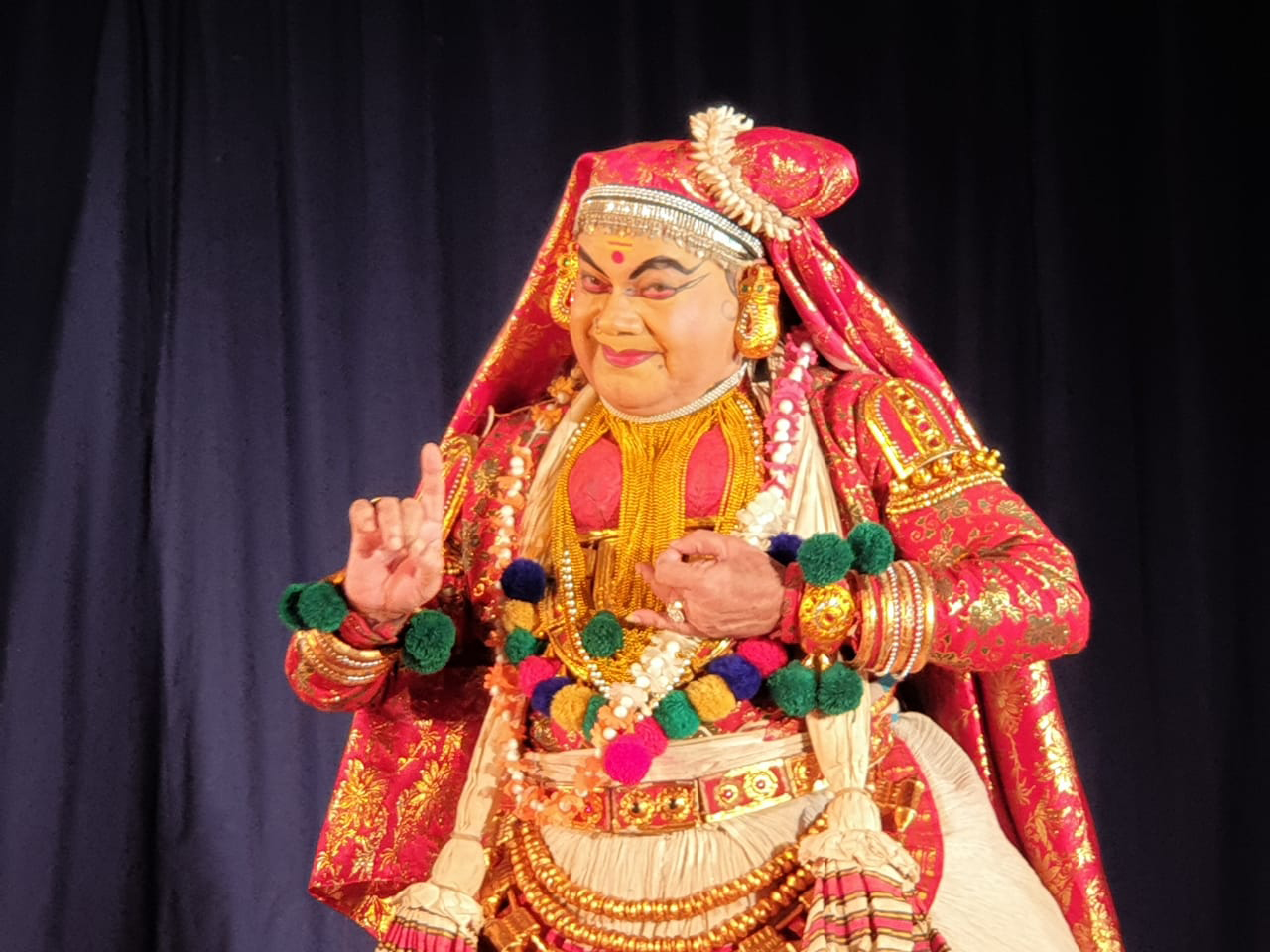
Over the years, Prof. Sankaranarayan has received many accolades from various organisations in West Bengal, Kerala and beyond including the prestigious ‘Kalashree Award’ from Kerala Sangeet Natak Akademi in 2013.
Sankaranarayanan’s advice to youngsters, students and future artistes…
“Avoid distractions, concentrate on upholding and preserving our rich cultural heritage which the entire world looks up to with respect. Our arts are not just entertainment. They have a lot of philosophic and educative content and values to bring sanctity and betterment in our lives. Be creative but maintain the aesthetics and sanctity of our art forms.”

